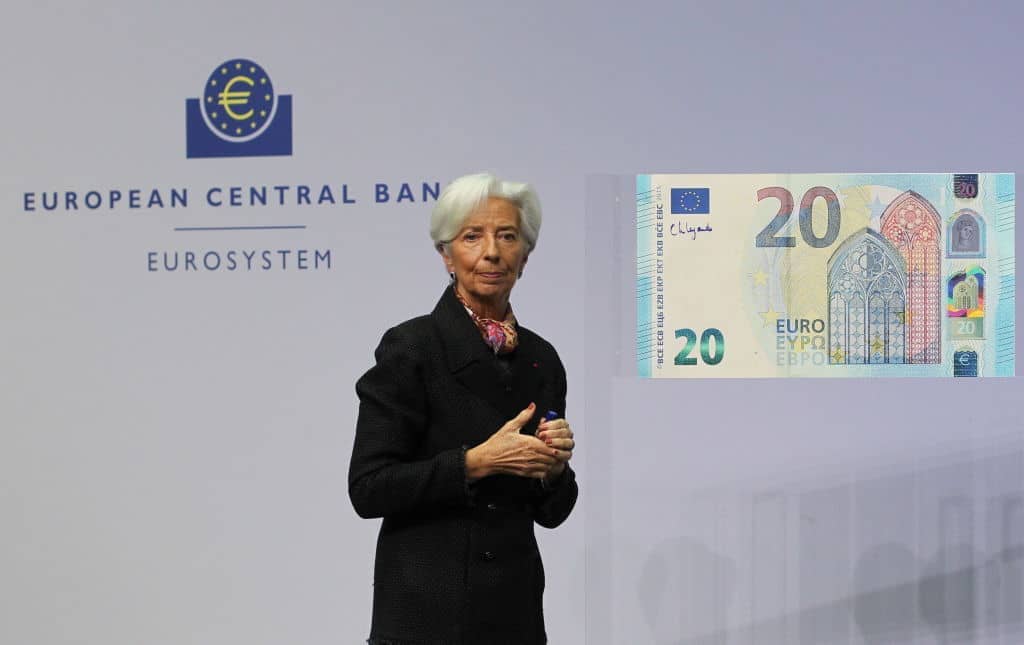Ursula von der Leyen dispensing vaccines, with a halo over her head perhaps? Emmanuel Macron riding a tank to symbolise the continent’s strategic autonomy? Or various commissioners whose names no one can quite remember setting carbon targets, fining Google and Apple, and dishing out grants for roads, bridges and tunnels?
It remains to be seen just what the European Central Bank comes up with for its planned re-design of the euro banknotes. One point is perfectly clear, however: the makeover will reveal the currency’s true colours as a vehicle for European integration rather than an effective instrument of economic policy.
In fact, if the ECB really wanted to redesign the euro, it could try pushing through a proper banking union
With the recovery from the pandemic, zero interest rates, mounting government debt, and inflation above five per cent, you might think the ECB had more important stuff to worry about than the design of its notes. Even so, its president Christine Lagarde made time this week to announce that it was planning a new look for its paper money. In what almost seems like a deliberate parody of the EU’s cumbersome decision-making process, 19 ‘experts’, one from each country inside the zone, in fields such as art, physics and astronomy have been tasked with coming up with initial proposals. These will then be put to the public, followed by a competition for the design of the notes, followed by a further consultation, followed by a final decision.
Simple? Well, not exactly. You could just settle on Beethoven on day one and leave it at that. The important point, however, was surely this. According to a statement from Lagarde put out by the ECB, the notes for the euro ‘are a tangible and visible symbol that we stand together in Europe, particularly in times of crisis.’
Well, at least that is clear. In fact, when it was originally created two decades ago, the euro was sold as mainly a technical way of improving the European economy. It would lower transaction costs, make trade easier, remove currency fluctuations, and provide a global alternative to the dollar. To its cheerleaders, however, it was always much more than that. It was meant to be a stepping stone towards a single state, a symbol of political unity, and a way of binding members together so tightly that it would be impossible for them to ever leave. The proposed redesign at least makes that explicit.
In fact, if the ECB really wanted to redesign the euro, it could try pushing through a proper banking union, mutualise its debts, create a fiscal policy strong enough to balance out demand across the region, and find a way of controlling the massive German trade surplus. This would ensure that it didn’t simply drain demand out of the rest of the bloc. It might also help prevent a re-run of the Greek crisis of a decade ago, and balance out growth around the bloc. The trouble is, that would be a little bit too much like hard work – so the zone will have to settle for a few years debating the look of the new bank notes instead.






Comments